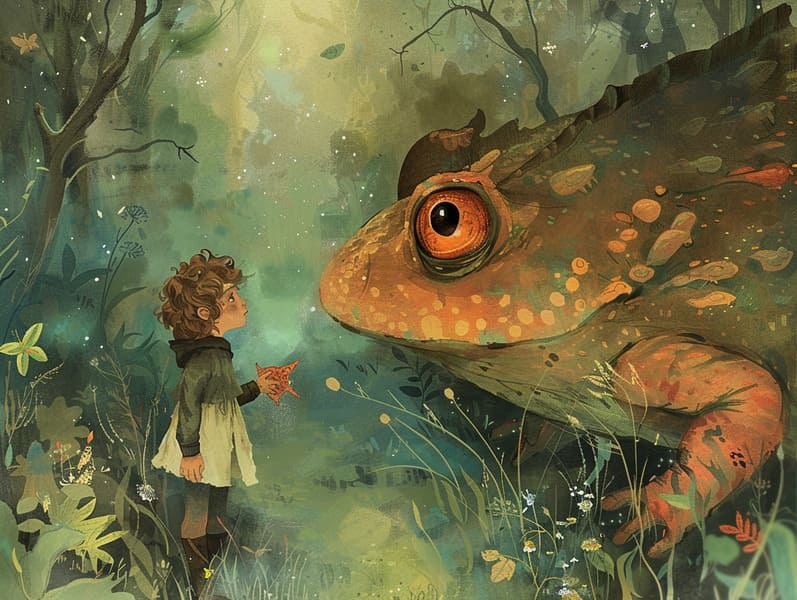
Historical fairy tales have deep roots. These tales have been passed down from one generation to the next far before they were ever put on paper. They developed from a variety of societies, including Western traditions. They were initially conveyed among elders, often carrying themes and messages pertaining to the societal norms and beliefs of the time.
The Brothers Grimm, Jacob and Wilhelm, were among the first to gather and publish many of these beloved fairy tales. Their anthology, "Grimm's Fairy Stories," included tales like "Cinderella," "The Bread Crumb Trail," and "Schneewittchen," which have since become mainstays in the world of beloved fairy tales. Similarly, the Danish author's fantastical narratives, such as "The Story of the Little Mermaid," and "The Ugly Duckling," have won hearts worldwide, ensuring their place in the pantheon of beloved fairy tales.
Despite their ancient origins, fairy tales remain as pertinent as ever, especially as children's night stories. These whimsical stories are now available in different formats, including vibrantly illustrated books, fantastical animations, and internet fairy tales.
Their enduring popularity can be attributed to several whimsical characteristics:
Crucial Morals: Ancient fairy tales often teach important moral lessons. Narratives like "The Tale of the Boy Who Cried Wolf" teach the importance of being truthful, while "The Tortoise and the Hare" highlight the qualities of tenacity and unassuming nature. These stories offer children clear distinctions between ethical and unethical, shaping their moral compass in a soft yet meaningful way.
Empathy and Awareness: Classic fairy tales frequently feature heroines facing problems and hurdles, provoking young readers to relate with their struggles and applaud their triumphs. For instance, "The Story of Beauty and the Beast" emphasizes the importance of seeing beyond the surface to see the true nature of a soul, advancing sympathy and comprehension.
Cultural Understanding: Many traditional fairy tales are steeped in the cultural contexts from which they originated. Reading these stories can provide enlightening views into different social structures, advancing a sense of cultural insight and appreciation.
Creativity and Fantasy: The whimsical elements in ancient fairy tales—magic wands—enhance children’s dreaming abilities. These stories take readers to fantastical realms, firing up fantastical thinking and a sense of astonishment that continues a lifetime.
Timeless fairy tales are not only spellbinding but also enlightening. They act as spellbinding tools in enhancing various thinking and feeling skills in young readers. When traditional fairy tales are voiced, they strengthen click here speaking abilities by showing new language and elaborate sentence structures. This practice also improves hearing abilities and focus, as the young listen intently, excited to see what happens next.
Furthermore, examining the themes and characters of ancient fairy tales can strengthen cognitive skills and reasoning skills. Young ones are instructed to recognize patterns, predict happenings, and comprehend cause and effect. These contemplations also benefit the young articulate their thoughts and feelings, cultivating their emotional intelligence.
In today’s online age, the existence of free fairy tales online has made these fairy tales more obtainable than ever. Web platforms and web apps give comprehensive collections of classic fairy tales that can be looked at or played anytime, anywhere. Fairy tales narrated are particularly sought after, extending an charming way for young ones to take part in these mesmerizing stories. Read-aloud stories and read-to-me stories bring characters and settings to life, often supported by spellbinding audio effects and background music that enhance the story journey.
The timeless fascination of old fairy tales lies in their ability to transform to present eras while retaining their central values. Contemporary reinterpretations of these stories often feature more varied protagonists and modern settings, making them meaningful to today’s audience. However, the main ideas of fearlessness, goodness, and lawfulness remain unchanged, continuing to affect children of all ages.
Traditional fairy tales also offer a sense of comfort and closeness. They render accessible a neat narrative with a apparent beginning, middle, and end, often winding up with the ending of conflicts and the triumph of morality over wickedness. This dependability can be solacing for young ones, imparting a sense of assuredness in an inconstant world.
Classic fairy tales continue to mesmerize and coach new generations, maintaining their spell and impact in modern society. As children's night stories, they deliver up a perfect blend of fantasy and learning, enriching moral values, empathy, and creativity. The abundance of online fairy tales and the favor of fairy tales spoken ratify that these traditional stories remain accessible to new generations.
By protecting and conveying these tales, we continue to value the rich tapestry of creativity and cultural heritage. Whether you are perusing a richly illustrated book, experiencing a digital collection, or listening via an spoken story, the beauty of classic fairy tales is always within reach. These narratives point out of the steadfast strength of narratives and its ability to join us across generations and cultures.
Be it you are exploring a vividly illustrated book, exploring a electronic collection, or listening on an audiobook, the magic of old fairy tales is always within reach.
These tales teach us of the timeless impact of narratives and its ability to tie us across time and space, making a tie that enchants and educates alike.